Collaven Moor
Together, we can save Collaven Moor for wildlife
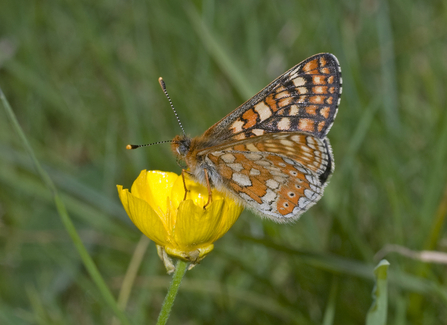
We have an exciting opportunity to double the size of one of Devon’s most important spaces for nature - but we need your help!
Collaven Moor is next to DWT’s Sourton Quarry nature reserve, on the edge of Dartmoor. Already home to exceptionally diverse plant communities, Collaven Moor could provide an invaluable haven to a wide range of threatened wildlife, including willow tits, southern damselflies and marsh fritillary butterflies.
DWT has been given the first option to purchase the land. However, with no current legal protection as a wildlife site, if the land were to be sold on the open market, this haven for wildlife could be lost to development or unsympathetic management.
Can you help us reach our fundraising target of £58,000 towards the purchase of Collaven Moor, so we can begin managing the habitats to benefit rare species?
Please give today to help DWT purchase Collaven Moor for wildlife
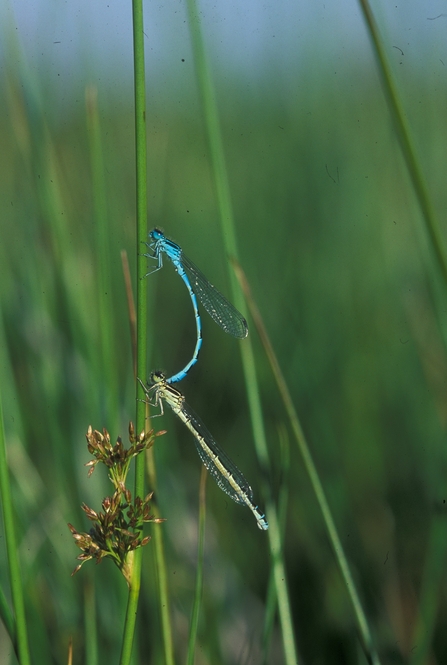
Southern damselflies (Steve Day)
Six miles west of Okehampton, Collaven Moor is something of an undiscovered gem, providing a botanically rich mosaic of wet grassland, heath, fen meadow and wet flushes.
Not only is the land next door to an existing DWT nature reserve, it is also a short flight away from one remaining population of southern damselflies, a very rare and threatened damselfly.
If Collaven Moor became part of a DWT nature reserve, then our sympathetic management of vegetation next to the streams could see these beautiful insects expand their range and thrive.
Collaven Moor’s breathtaking variety of grassland habitats are a feast for pollinators and caterpillars, featuring a diverse array of wildflowers. The site is abundant in flowering plants - both common and rare species - which play a key role in the life cycle of a range of threatened insects and birds.
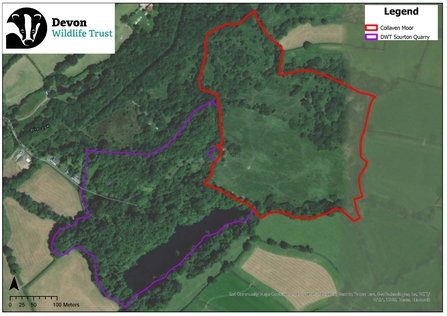
Your donation will help secure these 20 acres of land for wildlife.
Collaven Moor is right next to DWT’s Sourton Quarry nature reserve, so your support would help to double the size of this haven for wildlife.
This larger nature reserve could play a significant role in nature recovery. For more than a decade, DWT’s Working Wetlands team has improved private landholdings for wildlife between the River Tamar and the western edge of Dartmoor, with trees planted, hedge management improved, ponds created, and wildflower-rich
grassland restored.
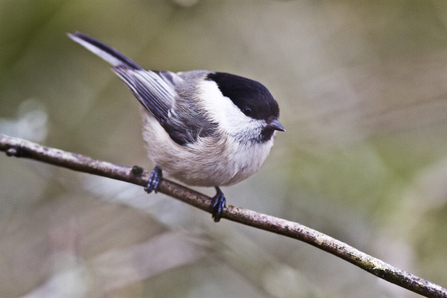
©Harry Hogg
A nature reserve doubled in size here would add a large area to the patchwork of well-managed wildlife habitats in this corner of Devon.
Here are just a few of the species that will be protected, if we are able to secure the purchase of Collaven Moor, with your
support.
The wildflowers and wildlife that could benefit from your support
Grasshopper warbler

Photo, Amy Lewis
This summer visitor from Africa has suffered severe declines in southern England in recent decades. But Collaven Moor offers the ideal conditions for this distinctively voiced warbler to breed successfully: flower-rich grasslands support abundant insect prey for both adults and chicks, and scrub offers cover for shelter and nesting.
Areas of scrub also provide ideal nesting habitat for willow tits, one of the UK’s most endangered birds.
Great burnet
©Philip Precey
The crimson flower heads of this member of the rose family are a welcome summer sight at Collaven Moor, attracting a wide variety of pollinating insects. A floodplain meadow species, it is rarely found in this part of Devon.
Meadow thistle
Photo, Mike Symes
A valuable food source twice over. In mid-summer, marsh fritillary butterflies (which should thrive at Collaven Moor, where their larval food plant devil’s-bit scabious is found in plenty) feed on nectar from the flowers; in early autumn the seed heads give sustenance to foraging goldfinches.
Narrow-bordered bee hawkmoth

Photo, Mike Symes
A Devon Special Species, this dayflying moth is presented with a floral banquet for all stages of its life cycle at Collaven Moor: devils-bit scabious for the caterpillars and a range of nectar sources, including lousewort, bugle and ragged robin.
Wavy St John's wort
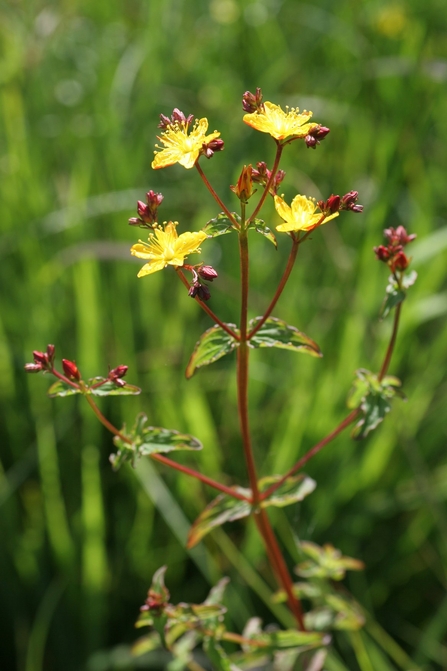
In England this herb is restricted to the far southwest. Another Devon Special Species, it is most associated with the Culm grasslands further north so its presence at Collaven Moor is another indication of this site’s botanical richness.
Common blue butterfly
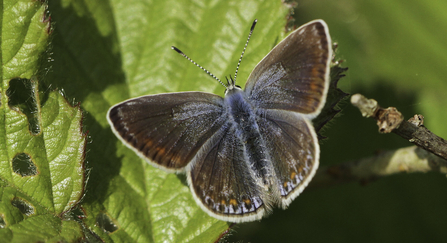
Common blue (female) © Frank Porch
Nationwide, the common blue recorded its worst ever summer in the 2024 Big Butterfly Count. So protection of sites like Collaven Moor - with an abundance of this butterfly’s larval food plant, greater bird’s foot trefoil - is essential to the common blue’s recovery.
